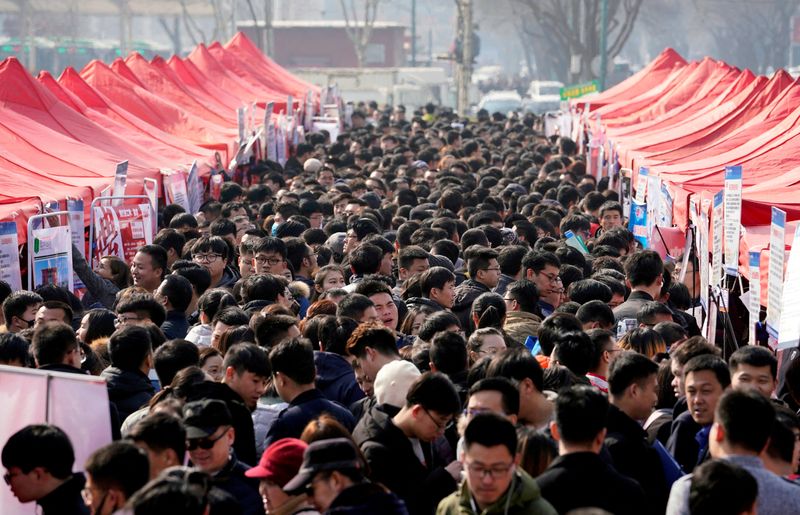BEIJING (Reuters) - Rising unemployment in China is pushing millions of college graduates into a tough bargain, with some forced to accept low-paying work or even subsist on their parents’ pensions, a plight that has created a new working class of “rotten-tail kids”.
The phrase has become a social media buzzword this year, drawing parallels to the catchword “rotten-tail buildings” for the tens of millions of unfinished homes that have plagued China’s economy since 2021.
A record number of college graduates this year are hunting for jobs in a labour market depressed by COVID-19-induced disruptions as well as regulatory crack-downs on the country’s finance, tech and education sectors.
The jobless rate for the roughly 100 million Chinese youth aged 16-24 crept above 20% for the first time in April last year. When it hit an all-time high of 21.3% in June 2023, officials abruptly suspended the data series to reassess how numbers were compiled.



Removed by mod
That’s not how methodology works. You can’t compare numbers from two institutions and assume they’re comparable because they sound the same. There are often many ways of measuring unemployment or joblessness. If we look at youths without jobs versus youth unemployments in the US, both statistics you can find from the BLS, you would see that those numbers are wildly different.
Again just look at the world bank data which is using standardized calculations.
https://data.worldbank.org/indicator/SL.UEM.1524.ZS?most_recent_value_desc=true
I’m not sure why your replies are all over the place in the thread here but for what it’s worth I think you’re right. I was incorrect to assert that the figure you presented was based on the new NBS methodology as the world bank uses standard methodology as you said and is the most reliable comparison.
It’s worth pointing out that they source their statistics from ILO who get their data from national agencies as far as I can tell so it’s not perfect but probably as good as we can get.
Thanks for taking a look! I actually appreciate it.
I also want to clarify, I’m by no means saying that this is a problem that China needs to find a way to address. I just find it weird that people think that anyone would want to put a positive spin on youth joblessness when it’s not outlandishly high relative to other countries.
Removed by mod